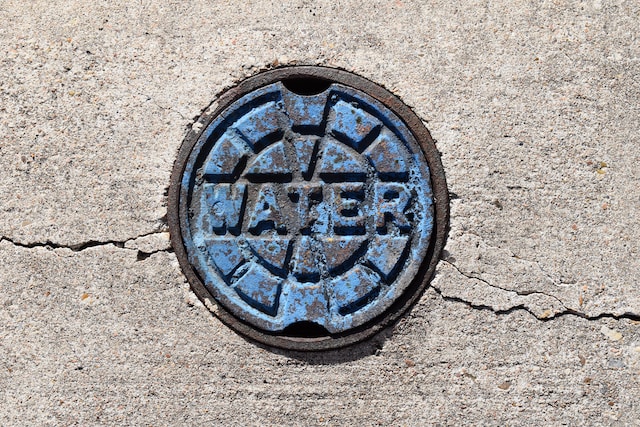Home insurance is a security blanket for your most significant investment. It provides financial protection in the face of unforeseen events like natural disasters, theft, and accidents. But what happens when your home insurance policy is up for renewal? We’ll walk you through the ins and outs of home insurance renewal, ensuring you make informed decisions to safeguard your home and assets.
Home insurance renewal
Home insurance renewal is the process of extending or updating your existing home insurance policy. Home insurance policies are typically renewed annually, though the renewal period may vary depending on your insurer and policy terms. You must review and renew your policy each year to ensure continuous coverage. Life is full of changes, from renovations to changes in your personal circumstances. Your insurance policy should adapt to these changes to offer you the best possible protection.
Home insurance renewal process
As your policy renewal date approaches, your insurance company will typically send you a renewal notice to inform you about the upcoming process, so having an up-to-date contact profile is crucial.
When you receive the renewal notice, verify the information. Take the time to inspect all the details provided in the notice carefully.
Reviewing your current policy
Before signing off on your policy renewal, invest some time in a comprehensive review of your current coverage.
- Coverage types and limits: Your home insurance policy may include various types of coverage, such as dwelling coverage, personal property coverage, liability coverage, and more. Examine whether these coverages adequately protect your home and possessions. Consider factors like the current value of your home and possessions and any new acquisitions.
- Deductibles: Deductibles are the amount you must pay out of pocket before insurance coverage kicks in. Understand the deductibles specified in your policy and how they impact your premiums. Adjusting your deductibles can help you find the right balance between premium costs and potential out-of-pocket expenses in the event of a claim.
- Premium changes: Be vigilant about any premium changes in your renewal notice. Several factors can influence premium adjustments, including your claims history, changes in property value, and inflation. If you notice significant premium increases, explore your options and understand the reasons behind these changes.
Shopping around for quotes
While sticking with your current insurer might be convenient, exploring what other insurance providers offer doesn’t hurt.
- Multiple quotes: Gather quotes from different insurers to compare coverage options and pricing. This practice can help you identify potential savings and more comprehensive coverage.
- Online tools and resources: Take advantage of online tools and resources that simplify the quote-gathering process. Many insurance websites offer quote calculators that make it easy to input your information and receive quotes quickly.
Contacting your insurance agent
Your insurance agent is there to help you navigate the renewal process. Don’t hesitate to reach out and make the most of their expertise:
- Questions to ask: Prepare a list of questions about your policy and coverage options. Your agent can provide clarification on any terms or conditions you find confusing.
- Requesting policy adjustments: If your needs have evolved over the past year, discuss potential policy adjustments with your agent. They can help tailor your coverage to better suit your current circumstances.
Making a decision
Finally, when it’s time to decide on renewing your home insurance policy, consider the following:
- Coverage: Evaluate whether your policy provides the coverage you need to protect your home and assets adequately.
- Cost: Take into account the cost of your insurance premiums, and ensure it’s within your budget.
- Reputation: Research the insurer’s reputation and customer reviews. A reliable insurer can offer peace of mind knowing they will be there when needed.
- Timing: Avoid procrastinating on your decision. Renewing your policy well before the expiration date ensures there are no gaps in your coverage, providing uninterrupted protection for your home and belongings.
Home insurance renewal best practices
When it comes to home insurance renewal best practices, there’s a wealth of strategies at your disposal to enhance your coverage and save on premiums.
Conduct a home inventory
One of the foundational steps in home insurance renewal best practices is to conduct a comprehensive home inventory. This process involves documenting all your valuable possessions within your home.
- Detailed documentation: Start by creating a detailed record of your belongings. For each item, record descriptions, including make and model if applicable, purchase dates, and where you purchased it.
- Photographs and receipts: Whenever possible, accompany your inventory with photographs of each item and any associated receipts. This visual documentation can be invaluable when substantiating your claims.
- Digital records: Consider keeping a digital copy of your inventory in addition to a physical one. Digital records are easier to update and can be stored securely in the cloud for easy emergency access.
- Invaluable claims: In the unfortunate event of a claim, your home inventory is concrete evidence of what you owned and its value. This can expedite the claims process and ensure you receive proper reimbursement for your losses.
Review your home’s value
The value of your home is not static; it can change over time, particularly if you’ve undertaken improvements or renovations. Failing to update your policy to reflect these changes could result in being underinsured. Here’s what you need to consider:
- Property improvements: If you’ve made significant improvements, such as adding a new room, renovating the kitchen, or finishing the basement, these enhancements likely increased your home’s value. Ensure that your policy accurately reflects these upgrades.
- Market trends: Keep an eye on real estate market trends in your area. Changes in property values can affect your insurance needs. If home values in your neighborhood are on the rise, it may be a good time to reassess your coverage.
- Regular policy reviews: Make it a habit to review your policy annually. This provides an opportunity to adjust your coverage based on any changes in your home’s value.
Bundle your policies
A smart way to save on insurance premiums is to bundle your home and auto insurance policies with the same insurer. This strategy offers a variety of benefits:
- Multi-policy discounts: Many insurers offer discounts when you bundle policies. These discounts can lead to significant cost savings.
- Streamlined management: Having both policies with one insurer simplifies the management of your insurance needs. You’ll deal with a single point of contact for both home and auto insurance matters.
- Enhanced coverage options: Bundling may open the door to enhanced coverage options or policy features that you wouldn’t have access to with separate insurers.
Consider speaking with your insurance provider about bundling options, as this can be a straightforward way to save money without sacrificing coverage.
Discounts and savings
To further reduce your insurance premiums, explore various discounts and savings opportunities.
- Home security systems: Installing a home security system can not only enhance the safety of your property but also qualify you for insurance discounts. These systems can include burglar alarms, surveillance cameras, and monitored security services.
- Fire and smoke alarms: Equipping your home with fire and smoke alarms is not only a safety essential but also a potential source of savings. Insurance providers often offer discounts for homes with these safety features.
- Loyalty discounts: Demonstrating loyalty as a long-term policyholder can pay off in the form of loyalty discounts. These discounts typically become available after you’ve been with the same insurer for a certain period.
Ask about available riders
Home insurance policies are not one-size-fits-all. Depending on your location and unique circumstances, you might need additional coverage beyond the standard policy.
- Earthquake insurance: If you live in an earthquake-prone area, your standard policy may not cover earthquake damage. In such cases, discuss earthquake insurance with your insurer to ensure you’re adequately protected.
- Flood insurance: Similarly, many standard home insurance policies do not cover flood damage. If you reside in a flood-prone region, inquire about flood insurance options.
- Unique risks: Assess your specific risks. Depending on your location and property type, you might need specialized coverage for risks like hurricanes, tornadoes, or wildfires.
Understand coverage gaps
Identifying and addressing coverage gaps is an integral part of the home insurance renewal process.
- High-value items: Standard policies often have limits on coverage for high-value items like jewelry, art, or collectibles. If you own valuable possessions that exceed these limits, you may need to adjust your policy or add endorsements for these items.
- Home-based businesses: If you operate a business from home, be aware that standard home insurance may not cover business-related liability or property damage. Consider a separate business insurance policy to fill this gap.
- Additional structures: Coverage for additional structures on your property, such as detached garages or sheds, may have limitations. Ensure that these structures are adequately covered.
Regularly reviewing your policy for these and other potential gaps ensures that you have comprehensive coverage that aligns with your evolving needs.
Renewing your home insurance policy is a critical task for every homeowner. Remember to consider the importance of proactive renewal management. Take the time to review your policy, consider your options, and make informed decisions to protect your home and assets. As you navigate the renewal process, remember that your home insurance is a vital safeguard, and with the right approach, you can keep it working effectively for you.




